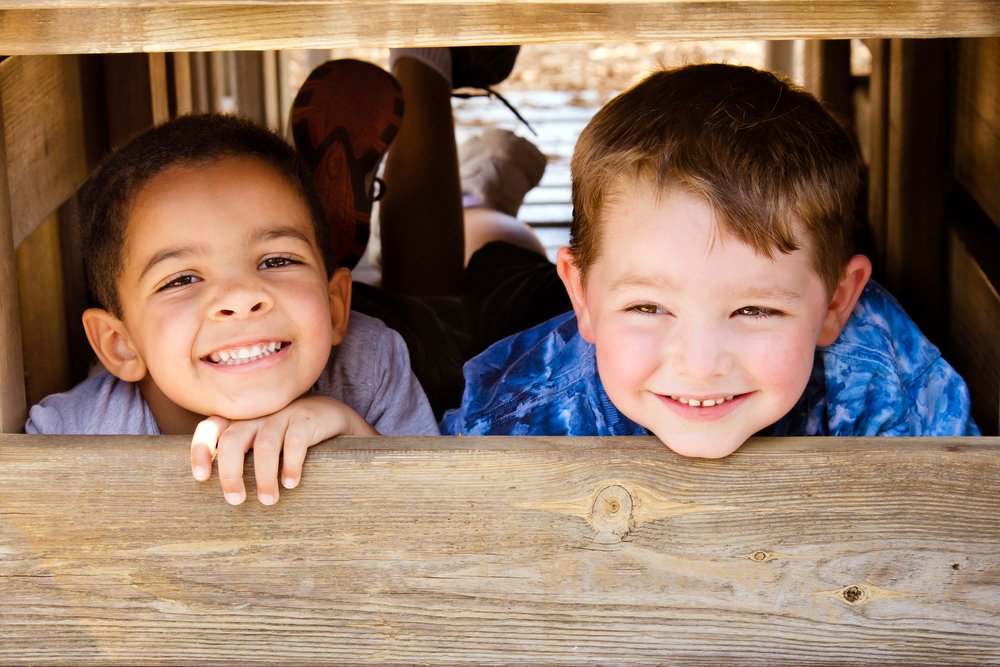Key points:
- As children grow, their play styles transition from solo play to more interactive and cooperative play with peers. Around age 2, they engage in parallel play, progressing to more interactive play by age 4. This evolution is a crucial aspect of their socio-emotional development.
- By age 3, children begin distinguishing friends from others and show increased interest in playing with peers. This stage involves observing others, sharing toys, and laying the foundation for forming deeper connections and understanding differences in preferences and feelings.
- At the age of 4, children actively engage in cooperative play, understanding the concept of teamwork and working toward shared goals.
- Encouraging group activities during these developmental stages is crucial for fostering social and emotional connections.
As adults, we know one of the most important things we need to know is how to work well with others. It’s a skill we use every day in our personal and professional lives. We need to know how to respect other people’s abilities and opinions in order to facilitate working together. It is a move from the intrapersonal world to the interpersonal one, and it involves our social and emotional skills. Research has also showed that cooperating with others contributes to our happiness.
As your little one grows, their style and experiences of play will change. They’ll start to be more interested in playing with others. Around their second birthday you’ll notice that they’ll be able to name a couple of their friends and they’ll enjoy having them around. Although they like having buddies to play with, their primary style of play might still be solo. You might notice some parallel playing in which them and their friend play alongside each other but each one does their own thing. Even though they are not working together per se, your little one is gathering a tremendous amount of sensory information, learning and preparing for future skills.
By the time they are 3 years old, your child will be able to distinguish between a friend and other kids they may know. They’ll also be more excited to play with them than by themselves. During this time, you’ll see they are more attentive and observant to what others are playing. Even though there might not be a full interactive play between them and their buddy, you’ll see precursory elements like the fact that they want to play the same thing and he get excited to share their toys. This process is how your little one starts forming relationships with the people around them. They’ll start noticing that other kids might like or not like the same things they do, and that everyone has feelings and different points of view. They’ll form deeper connections and choose their tribe.
By the time they’re 4, they’ll be able to actively cooperate with other children in a full interactive play. For example, playing a game and working towards the same goal. At this point, they’ll begin to understand the meaning of teamwork. This is a fundamental step in their socio-emotional development. Developing this skill lays the foundation for understanding the idea of sharing, being friendly, and understanding other people’s opinions and feelings; all precursors of empathy. Not to mention that group activities also promote physical, problem solving, and attention skills.
This is why during these years it’s important to encourage and foster the social and emotional connections your little one makes during group activities. As they work with other children, they’ll learn how to express themselves and understand the importance of cooperating with other people; developing close and nurturing relationships that will lay the basis for future ones.
Here are some ideas on group activities to get you started!
- Mirroring each other’s gestures, expressions, and moves. This activity is great for attention, memory, and body awareness.
- Tracing each other using paper and crayons. By turns, each child should lay on the paper and be traced by the other person. Make it fun by incorporating artsy materials like markers, crayons and stickers. You can even make it more interesting by asking the kids that traced to say characteristics of their friends, while you help them write them down inside each of the figures.
- Have fun with bubbles. One kid will be in charge of blowing them and the other of popping them. This will encourage sharing and give your little one a chance to experience both point of views of a situation.
- Play balance challenges. One person has to count with their eyes closed and when they opens them the other people have to hold a balance pose like standing on one foot or balancing a book on their heads.
- Make an obstacle course like the ones you did when your little one used to crawl around the house,;but this time, encourage the children to hold hands and work as a team to make it through the obstacles.
Apart from having an amazing time, your little one will learn about compromising, sharing, and becoming a part of a team. Make today a great opportunity for a group activity!








